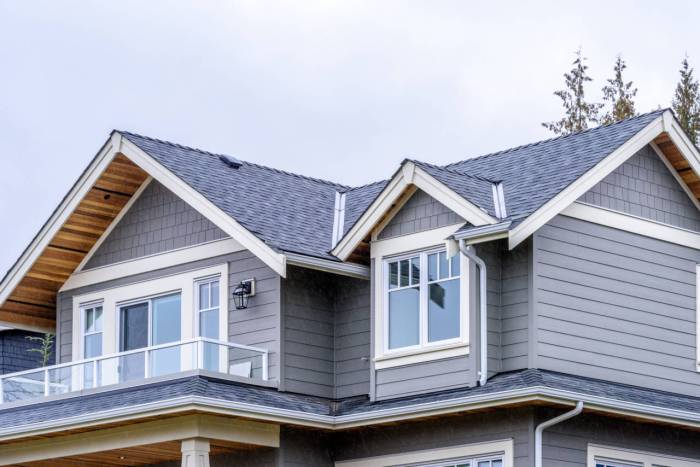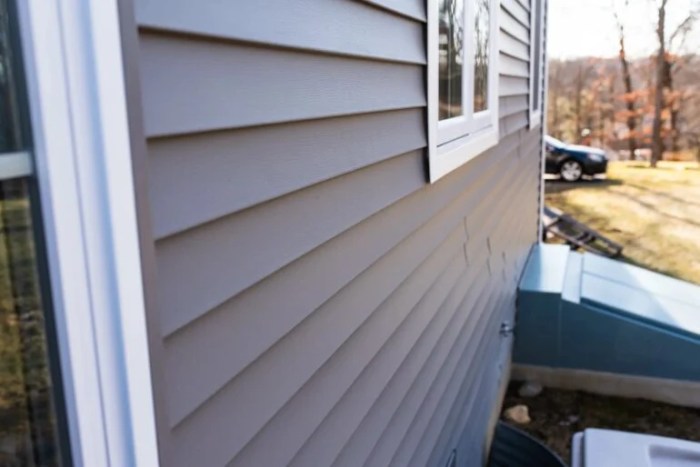Cost to Get Vinyl Siding Installed: Factors, Costs, and Tips
Exploring the cost to get vinyl siding installed, this article delves into the various factors, average cost ranges, additional costs, and cost-saving tips associated with this home improvement project. Whether you're a homeowner looking to enhance your property or a curious reader interested in understanding the expenses involved, this comprehensive guide has you covered.
Factors Affecting Cost of Vinyl Siding Installation

When it comes to installing vinyl siding, several factors can influence the overall cost of the project. Understanding these factors can help homeowners make informed decisions and budget accordingly for their siding installation.
Type and Quality of Vinyl Siding
The type and quality of vinyl siding you choose will have a significant impact on the cost of installation. High-quality, durable siding will typically be more expensive upfront but may require less maintenance and repairs in the long run, potentially saving you money over time.
Size and Complexity of the Project
The size and complexity of the siding project will also affect the cost. Larger homes or those with intricate designs may require more materials and labor, resulting in higher installation costs. Additionally, factors such as the number of corners, windows, and doors can impact the overall price.
Removal of Existing Siding
If you have existing siding that needs to be removed before installing the new vinyl siding, this will add to the overall cost. The time and effort required to properly remove the old siding can vary depending on the material and condition, affecting the total installation cost.
Additional Features and Customizations
Adding extra features or customizations to your vinyl siding, such as decorative trims, unique colors, or insulated backing, can increase the cost of installation. These upgrades can enhance the appearance and functionality of your siding but will come at an additional expense.
Location and Accessibility
The location of your home and its accessibility can impact the cost of vinyl siding installation. Factors such as the local labor costs, building codes, and the ease of access to your property can all influence the overall price of the project.
Contractor Expertise and Reputation
The expertise and reputation of the contractor you hire for the installation can also affect the cost. Experienced and reputable contractors may charge higher fees for their services, but they often deliver high-quality workmanship and provide peace of mind for homeowners.
Average Cost Range for Vinyl Siding Installation
Installing vinyl siding typically costs between $3 to $7 per square foot. This range includes the cost of materials, labor, and any additional expenses that may arise during the installation process.
Regional Cost Variations
The cost of vinyl siding installation can vary across different regions or states due to factors such as labor costs, material availability, and local regulations. For example, urban areas with higher labor costs may have a higher average cost for installation compared to rural areas.
Additionally, regions with extreme weather conditions may require additional preparation or special materials, impacting the overall cost.
Factors Influencing Cost Range
Quality of materials
Higher quality vinyl siding materials will typically come at a higher cost per square foot.
Complexity of the project
Factors such as the size of the house, number of stories, and any unique architectural features can impact the total cost of installation.
Additional services
Services like insulation, trim work, and removal of existing siding can add to the overall cost of the project.
Contractor experience
Experienced contractors may charge a higher rate for their services, but they also bring expertise that can ensure a successful installation.
Additional Costs to Consider
When planning for vinyl siding installation, it's important to factor in additional costs that may arise beyond the basic installation process. These extra expenses can significantly impact the total cost of the project, so it's crucial to be aware of them from the start.
Removal of Old Siding
One of the potential additional costs to consider is the removal of old siding. If your home currently has siding that needs to be taken down before the new vinyl siding can be installed, this can add to the overall cost.
The labor involved in removing the old siding, as well as any disposal fees, should be factored into your budget.
Trim Work
Another cost to keep in mind is the trim work that may be needed to complete the vinyl siding installation. Trim pieces are essential for finishing the edges and corners of the siding, providing a polished look to the overall appearance of your home.
The cost of trim materials and labor for installation should be considered in your budget.
Insulation
Proper insulation is crucial for energy efficiency and maintaining a comfortable indoor temperature. While some vinyl siding installations may include insulation as part of the package, others may require additional insulation to be installed separately. The cost of insulation materials and labor should be accounted for to ensure your home is well-insulated and energy-efficient.
Cost-Saving Tips for Vinyl Siding Installation

When considering installing vinyl siding, there are several cost-saving strategies that homeowners can implement without compromising quality. These tips can help reduce the overall expenses of the project while still achieving a durable and aesthetic result.
Choose Mid-Range Materials
- Opt for mid-range vinyl siding materials that offer a good balance between cost and quality. While premium materials may have additional features, mid-range options can provide a cost-effective solution without sacrificing durability.
DIY Preparation Work
- Consider handling the preparation work yourself, such as removing old siding or clearing the area around your home. By taking on these tasks, you can save on labor costs and streamline the installation process.
Compare Multiple Quotes
- Request quotes from multiple contractors to compare prices and services. This allows you to find a competitive offer that fits your budget while ensuring you are getting a fair deal for the installation.
Consider Energy-Efficient Options
- Investing in energy-efficient vinyl siding can lead to long-term cost savings on heating and cooling bills. While the initial investment may be higher, the energy savings over time can offset the additional expenses.
Final Thoughts
In conclusion, navigating the cost of vinyl siding installation involves considering multiple factors, understanding average cost ranges, factoring in additional expenses, and implementing cost-saving strategies. By being informed and strategic, homeowners can make the most of their investment in vinyl siding, enhancing both the aesthetics and value of their property.
FAQ Insights
What factors can influence the cost of installing vinyl siding?
Factors like material quality, labor costs, size of the project, and additional features can impact the overall cost of vinyl siding installation.
What is the average cost range for installing vinyl siding per square foot?
The average cost range for installing vinyl siding is typically between $4 to $8 per square foot, varying based on location and project complexity.
Are there additional costs to consider besides the basic installation of vinyl siding?
Additional costs may include removal of old siding, trim work, insulation, permits, and unforeseen structural issues, all of which can add to the total project cost.
How can homeowners save on vinyl siding installation costs?
Homeowners can save on costs by obtaining multiple quotes, choosing cost-effective materials, bundling services, performing some tasks themselves, and properly maintaining the siding for longevity.




